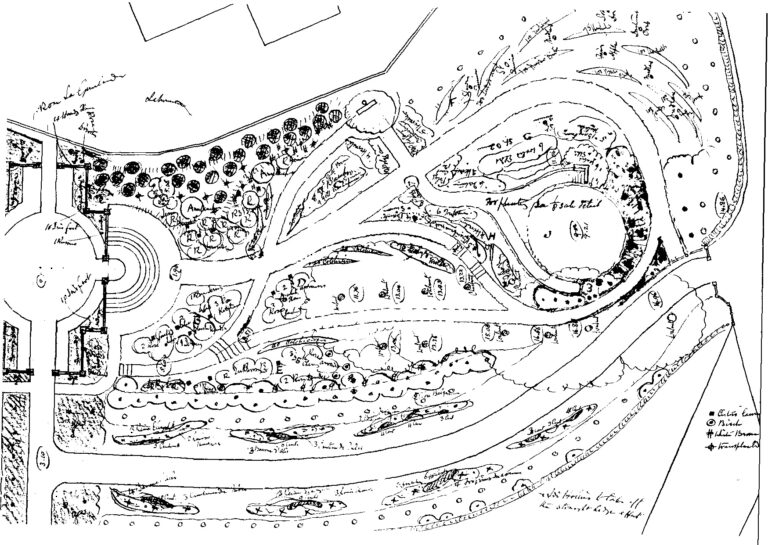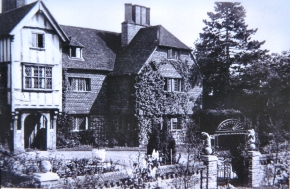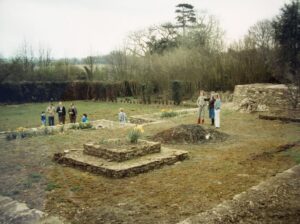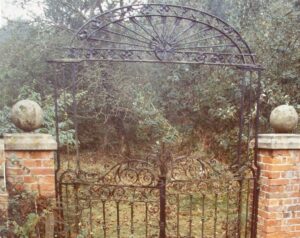Gertrude Jekyll’s plans
are for a four and a half acre garden on a sloping, chalky site (pH 7-8). Here she designed one of her most beautiful gardens. It includes many features of a typical Jekyll garden, but on a rather smaller scale than many of her commissions. To the north-west of the house stands the Wild garden. Grass paths wind from semicircular grass steps through wild flowers, rambling and species roses, to a small copse of walnut trees and beyond them a pond. Some of Jekyll’s original drifts of daffodils survive at the end of the Wild Garden. To the south-east of the house stands the Formal garden. Here there are no curved lines. In a geometric outline Jekyll designed a rose garden, drystone walls and her typical herbaceous borders. She described similar borders in her book Colour Schemes for the Flower Garden, published in the year she designed this garden, 1908. Here colours run in drifts from cool (blues and whites) to hot (reds and oranges)and out to cool again. These, with the tennis and bowling lawns are enclosed in yew hedging which serves both as protection for plants and a strong background to the colours.
Outside the hedging lie the nuttery, orchard, kitchen garden, stable cottage and cottage beds. The whole is faithfully restored to the many plans and plants that Jekyll provided. Very few of her original plants survived the 70 years between design and restoration but the vast majority of her plants do survive in England’s nurseries, and finding them for restoration has been relatively easy and accurate.







